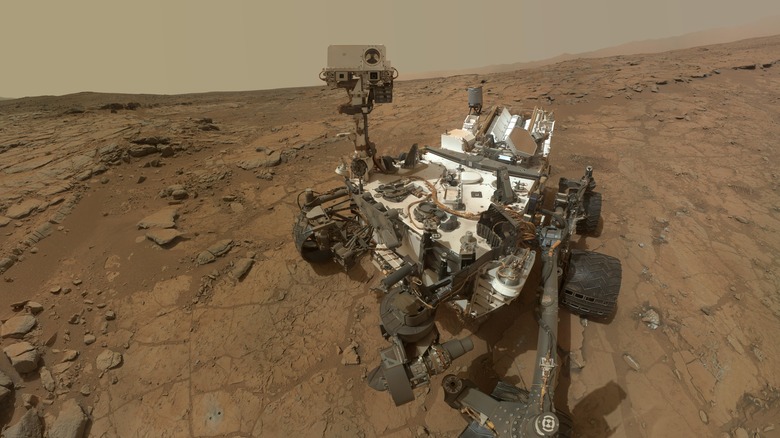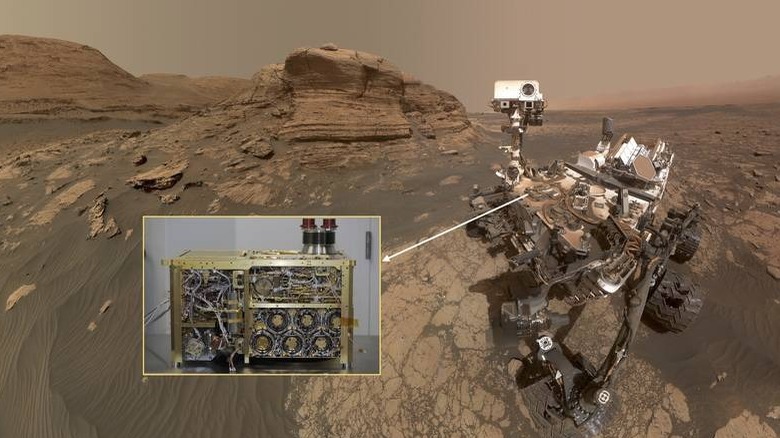What The Curiosity Rover Has Learned In Its First 10 Years On Mars
NASA's Curiosity rover has now been exploring Mars for over 10 years. The rover landed on the red planet on August 5, 2012, marking a new era of Mars exploration. Unlike previous NASA rovers like Spirit or Opportunity, which were relatively small and light, Curiosity was a new type of rover that was much bigger and heavier, coming in at about the size of a small car. Like its sibling rover Perseverance, Curiosity was designed to study the Martian environment, on the principle that if we can't (yet) bring pieces of Mars back to the lab to study, we should bring the lab to Mars.
For this reason, Curiosity is equipped with a huge variety of instruments, including cameras, spectrometers, radiation detectors, and sensors. These are used to study Martian rocks, dust, atmosphere, radiation, weather, and, of course, to capture beautiful images of this far-off planet. One of Curiosity's most important tools is called the Sample Analysis at Mars (SAM), which consists of three different spectrometers that are used to analyze the composition of samples taken by the rover.
This work has helped scientists learn about the current and past state of Mars, and it looks for organic compounds that are required for life — meaning it looks for some of the basic indications of whether there could ever have been life on the planet. Celebrating the rover's birthday, NASA shared an overview detailing some of the biggest accomplishments of SAM in Curiosity's first decade on Mars.
Organic molecules and more
One of the biggest open questions that scientists have about Mars is whether there was ever life there. They are pretty sure nothing lives there now, but there could have been microbial life present millions of years ago when there was liquid water present on the planet's surface (via NASA). Finding out whether something lived so long ago isn't easy, but research using data from Curiosity has taken us some steps closer to an answer. The rover has detected organic molecules containing carbon and hydrogen in Mars' Gale Crater, and while these molecules don't definitely indicate life was there, they do provide the basic building blocks for life. The big takeaway from this finding is that Mars could indeed once have been habitable.
Another important finding from Curiosity and SAM is the strange case of the variable methane in Mars' atmosphere. Scientists know that Mars has methane gas in its atmosphere, but Curiosity has found that the amount of methane present seems to vary widely, from high measurements of 21 parts per billion units by volume (ppbv) to lows of fewer than 1ppbv. Scientists still don't fully understand why the rate is so variable, as it could be coming from various sources like being released from rocks or seeping up through the surface from underground. Then the gas is disappearing somehow, perhaps related to Mars' day and night cycle.
There's plenty of other work Curiosity has done in addition to these two big topics. The rover has found evidence about the history of water on Mars, including identifying an ancient oasis, as well as learning about the geological history of the planet and investigating the presence of another element that is important for life, nitrogen.

